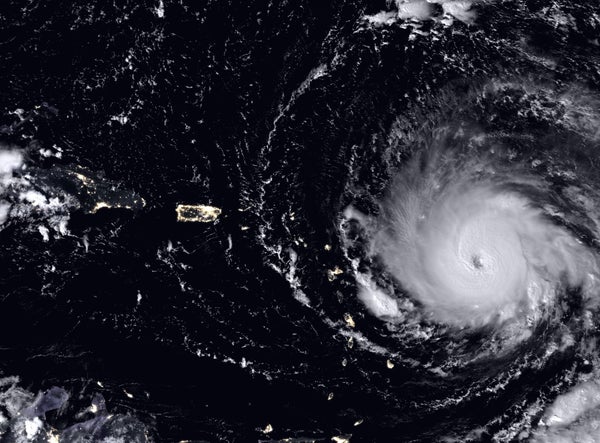On Wednesday, September 6, the colossal category 5 Hurricane Irma amped up its already stunning winds to 185 miles per hour—the second fastest ever recorded for a hurricane in the Atlantic Ocean. We are all fascinated with brutal extremes, it seems. So, below are the records set by the most impressive North Atlantic hurricanes, since meteorologists began to name them more than half a century ago—as well as for storms in the Pacific Ocean, which actually rank number one in many of the categories.
By the way, hurricanes, cyclones and typhoons are all the same thing; they’re just different names used in different regions. “Smaller” hurricanes can still be terribly dangerous and damaging, too; Hurricane Harvey, which just drowned Texas and Louisiana, does not make the record books in any category—except for rainfall.
Hurricane Irma (at posting time):
Category: 5
Peak winds: 185 mph
Lowest atmospheric pressure: 914 millibars
Greatest diameter: 420 miles
On supporting science journalism
If you're enjoying this article, consider supporting our award-winning journalism by subscribing. By purchasing a subscription you are helping to ensure the future of impactful stories about the discoveries and ideas shaping our world today.
North Atlantic’s Biggest Beasts
Peak winds (sustained for one minute)
Allen (1980): 190 mph
Irma (2017): 185
Wilma (2005): 185
Gilbert (1988): 185
Katrina (2005): 175
Lowest atmospheric pressure (lower is stronger)
Wilma: 882 millibars
Gilbert: 888
Katrina: 902
Typical pressure at sea level: 1013
Most rainfall in U.S. (Atlantic and Pacific)
Hiki (1950, Hawaii): 52.0 inches
Harvey (2017, Texas): 51.8
Amelia (1978, Texas): 48.0
World Record Holders
Peak winds at sea
Patricia (2015, South Pacific): 215 mph
Nancy (1961, North Pacific) 215
Peak winds upon landfall
Haiyan (2013, Philippines) 190 mph
Meranti (2016, Philippines) 190
Lowest pressure
Tip (1979, South Pacific): 870 millibars
Greatest diameter (of circulation)
Tip: 1,380 miles (distance from New York City to Dallas)
Source: NOAA
